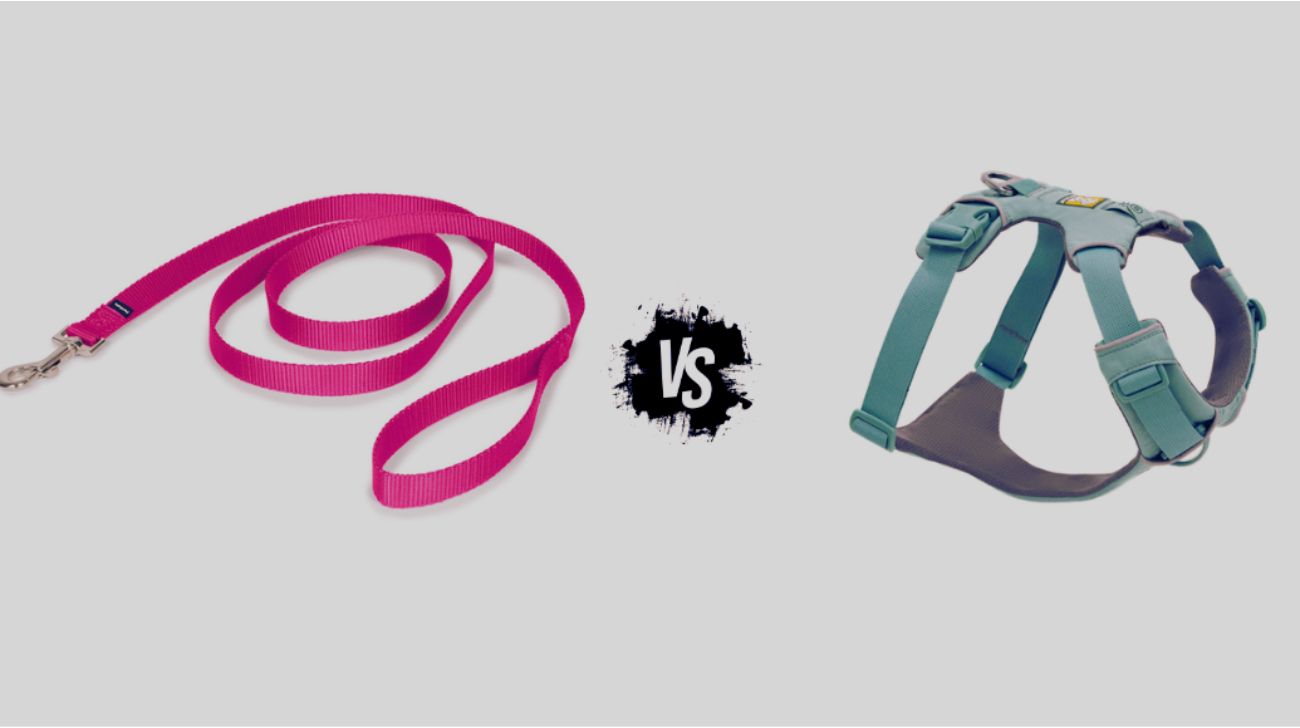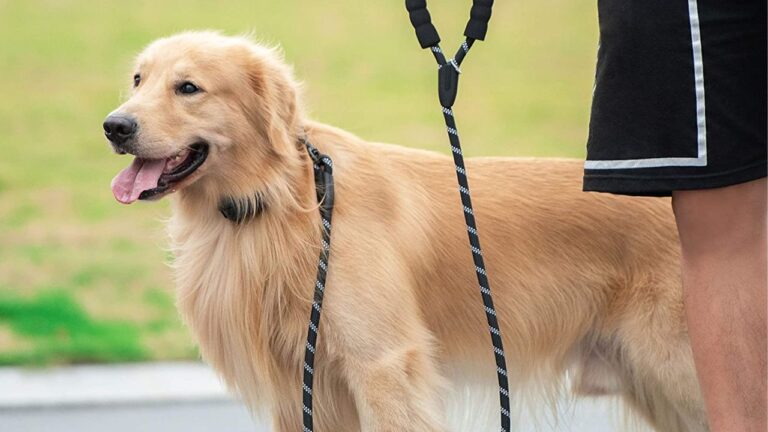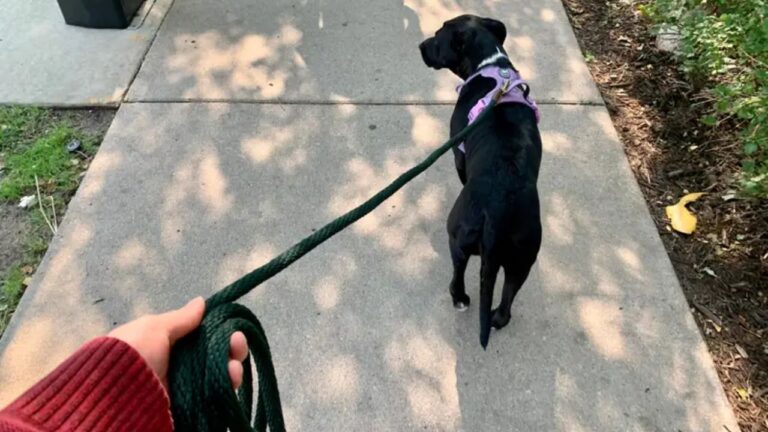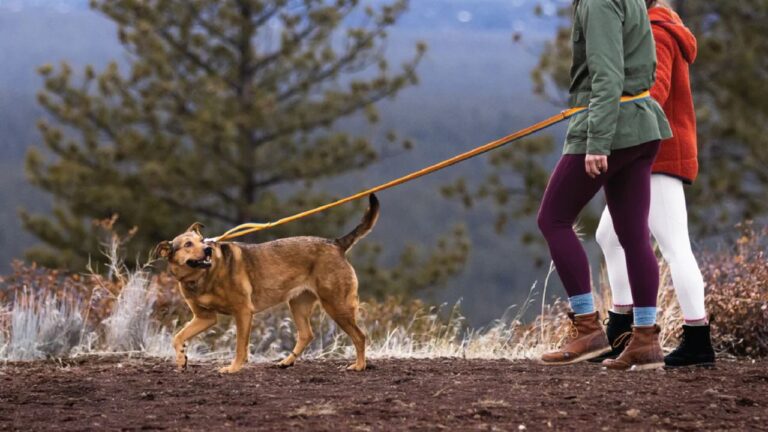Dog training is as much about understanding your dog’s personality and needs as it is about choosing the right tools. For many dog owners, the choice between a leash vs harness for dogs can be a tough one, especially when it comes to managing pulling, ensuring safety during walks, or accommodating specific health concerns.
Both tools have unique benefits and are suited for different dogs and scenarios. Ensure your Newfoundland’s comfort and security with expert tips on how to ensure a safe collar fit for Newfoundland.
As a devoted dog owner for the past two years, my journey with pets has been nothing short of transformative. I’ve discovered the true joy and responsibility that come with caring for furry companions.
I’ll break down the features, advantages, and potential drawbacks of leashes and harnesses. Whether you’re raising a new puppy or refining an older dog’s behavior, understanding the differences will help you make an informed decision. Discover why choosing the right walking accessory is crucial for your dog’s comfort and your peace of mind.
| My Personal Opinion Over the years, I’ve found that harnesses are incredibly effective for dogs that pull excessively or have respiratory issues, as they distribute pressure evenly across the body and reduce strain on the neck. On the other hand, leashes are indispensable for providing direct control during walks and are essential for training basic commands and maintaining safety in various environments. |
Blog Highlights
ToggleWhat Is a Leash?
A leash is a tether used to control and guide a dog during walks and outdoor activities. It connects to the dog’s collar or harness, allowing the owner to manage the dog’s movements and ensure safety. Discover the ideal fit by learning what size collar for Newfoundland dog to ensure your pet’s comfort and safety.
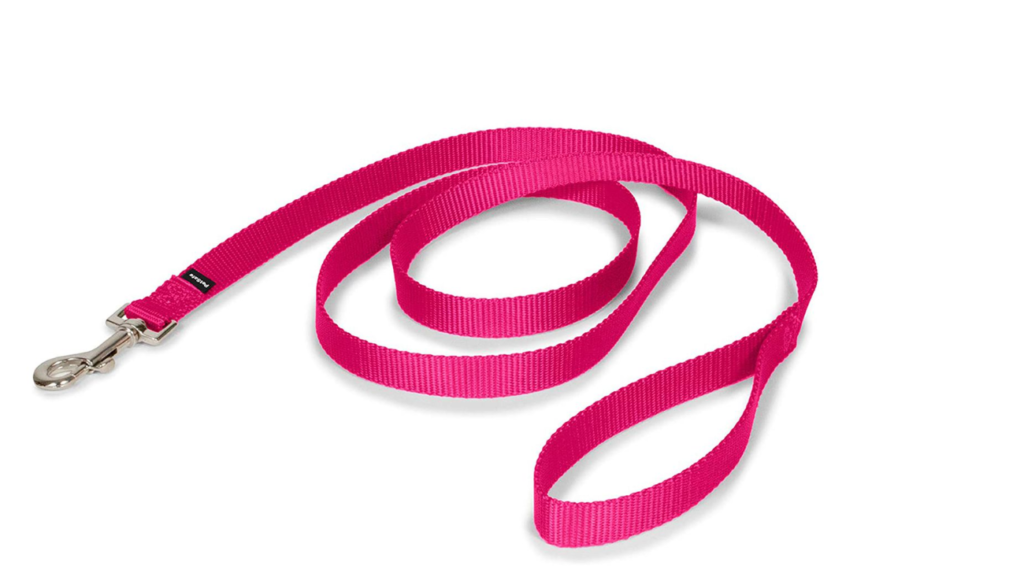
Key Features of a Leash:
- Material Variety: Leashes come in various materials such as nylon, leather, and chain, each offering different levels of durability and comfort.
- Length Options: Available in multiple lengths (commonly 4 to 6 feet) to provide varying degrees of freedom and control.
- Attachment Types: Includes standard clips, swivel clips, and quick-release mechanisms for ease of use.
- Styles: Options like retractable leashes offer adjustable lengths, while fixed-length leashes provide consistent control.
Benefits of the Leash:
- Control and Safety: Essential for keeping your dog safe in public spaces and preventing them from running into dangerous situations.
- Training Tool: Vital for teaching basic commands and reinforcing good walking behavior.
- Versatility: Suitable for a wide range of activities, from casual walks to more vigorous exercises.
- Portability: Lightweight and easy to carry, making them convenient for daily use.
Limitations of the Leash:
- Potential for Pulling: Without proper training, dogs may pull on the leash, causing discomfort for both the dog and the owner.
- Limited Pressure Distribution: Leashes attached to collars can place strain on a dog’s neck, especially in strong pullers.
- Dependency on Handler: Requires consistent handling and training to be effective.
What Is a Harness?
A harness is a device worn around a dog’s chest and shoulders, distributing pressure across the body rather than focusing on the neck. Harnesses come in various designs, including front-clip, back-clip, and dual-clip options, each suited for different training and walking needs. For expert tips on how to fit a collar on a Belgian Shepherd, this guide offers simple steps to ensure your dog’s collar fits securely and comfortably.
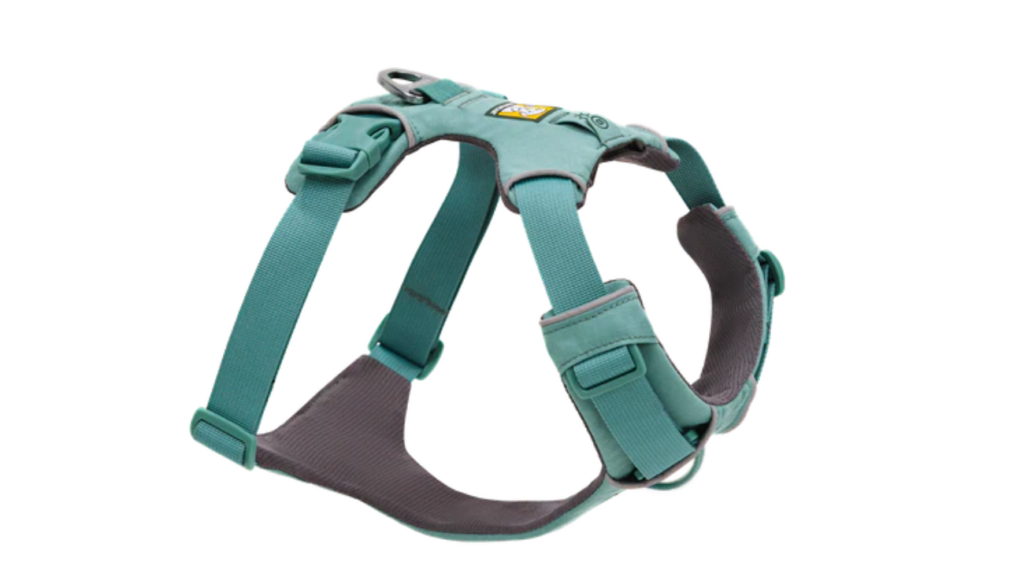
Key Features of a Harness:
- Pressure Distribution: Evenly spreads force across the chest and shoulders, reducing strain on the neck.
- Multiple Attachment Points: Front-clip harnesses are excellent for training, back-clip for casual walks, and dual-clip for versatile use.
- Adjustable Fit: Straps allow for customization to ensure comfort and security.
- Variety of Designs: Includes no-pull harnesses, step-in harnesses, and vest-style harnesses for different preferences and needs.
Benefits of a Harness:
- Reduces Neck Strain: Ideal for dogs with respiratory issues or sensitive necks.
- Better Control Over Pulling: Front-clip harnesses are particularly effective for training strong pullers.
- Prevents Injuries: Safer for dogs with tracheal or spinal problems by avoiding neck strain.
- Escape-Proof Options: Some harnesses are designed to prevent even the most determined escape artists.
- Enhanced Comfort: Padded harnesses reduce the risk of chafing and irritation during walks.
Limitations of a Harness:
- Bulkier Than Collars: Can feel restrictive or uncomfortable if not fitted properly.
- Training Needed: Some dogs may resist wearing a harness initially.
- Not Ideal for All-Day Wear: Prolonged use can cause chafing or irritation if the harness isn’t well-padded.
Comparing Leash vs Harness For Dogs: Key Differences
Both the leash and harness have distinct advantages based on a dog’s needs and the owner’s goals. Let’s compare their features side-by-side:
Detailed Differences Between Leash vs Harness For Dogs
Let’s dive deeper into how leashes and harnesses compare in terms of design, safety, training effectiveness, and suitability.
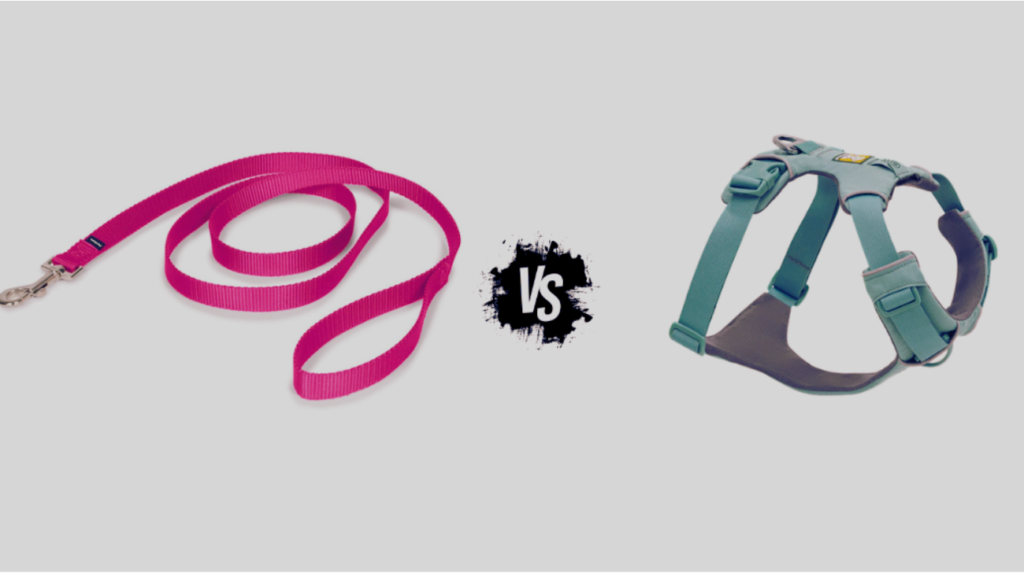
1. Design and Structure
Leash: A leash is typically a long, flexible strap or rope that connects to a dog’s collar or harness. It allows the owner to guide and control the dog’s movements during walks and other activities. Leashes come in various materials, lengths, and styles to suit different needs and preferences.
Harness: A harness wraps around the dog’s chest and shoulders, distributing pressure evenly across the body. It often includes multiple straps and adjustable buckles to ensure a secure and comfortable fit. Harnesses can feature different attachment points for the leash, such as front-clip for training or back-clip for casual walks.
Key Difference: Leashes provide direct control over the dog’s movements, while harnesses offer a more comfortable and secure way to manage pulling and ensure safety. For detailed guidance on selecting the correct collar size for a Belgian Shepherd, this article provides essential tips to ensure your dog’s comfort and safety.
2. Control and Effectiveness
Leash: Leashes offer direct control, making them essential for teaching basic commands and ensuring safety in various environments. However, they can sometimes lead to pulling and strain on the dog’s neck if not used correctly.
Harness: Harnesses provide better control over pulling behaviors by distributing the force across the dog’s body. Front-clip harnesses are particularly effective for training dogs to stop pulling, as they redirect the dog’s momentum without causing discomfort.
Key Difference: Harnesses are more effective for managing strong pullers and training no-pull behavior, while leashes are indispensable for direct control and safety.
3. Comfort and Safety
Leash: When attached to a collar, leashes can place strain on a dog’s neck, which may lead to discomfort or injury, especially in dogs that pull frequently. Proper fitting is crucial to prevent choking or neck strain.
Harness: Harnesses are generally safer and more comfortable, especially for dogs with health issues like tracheal or spinal problems. They prevent neck strain by distributing pressure across the chest and shoulders, reducing the risk of injury.
Key Difference: Harnesses offer enhanced comfort and safety for dogs with health concerns, while leashes attached to collars may cause discomfort if not used properly. Discover the perfect collar size for an Anatolian Shepherd Dog to ensure comfort and security for your furry friend.
4. Training Effectiveness
Leash: Leashes are vital for basic training, allowing owners to teach commands like “sit,” “stay,” and “heel.” They provide a direct means of communication and control during training sessions.
Harness: Harnesses are particularly effective for training dogs to stop pulling. Front-clip harnesses can discourage pulling by redirecting the dog’s movement, making them a valuable tool for no-pull training.
Key Difference: Harnesses offer specialized training benefits for managing pulling behaviors, while leashes are essential for overall obedience and command training.
5. Suitability for Different Dogs
Leash: Leashes are suitable for all dogs, regardless of size or breed. However, the type of leash (e.g., retractable, fixed-length) may vary based on the dog’s strength and behavior.
Harness: Harnesses are especially beneficial for dogs that pull heavily, have respiratory issues, or are prone to escaping. They are also ideal for puppies and older dogs that may require extra support during walks.
Key Difference: Harnesses cater to specific needs like pulling and health concerns, making them a versatile option for a broader range of dogs, while leashes are universally necessary for all dogs. Learn more about the unique double-layered coat of an Anatolian Shepherd and how to care for it effectively.
Using the Tools Safely: Essential Tips
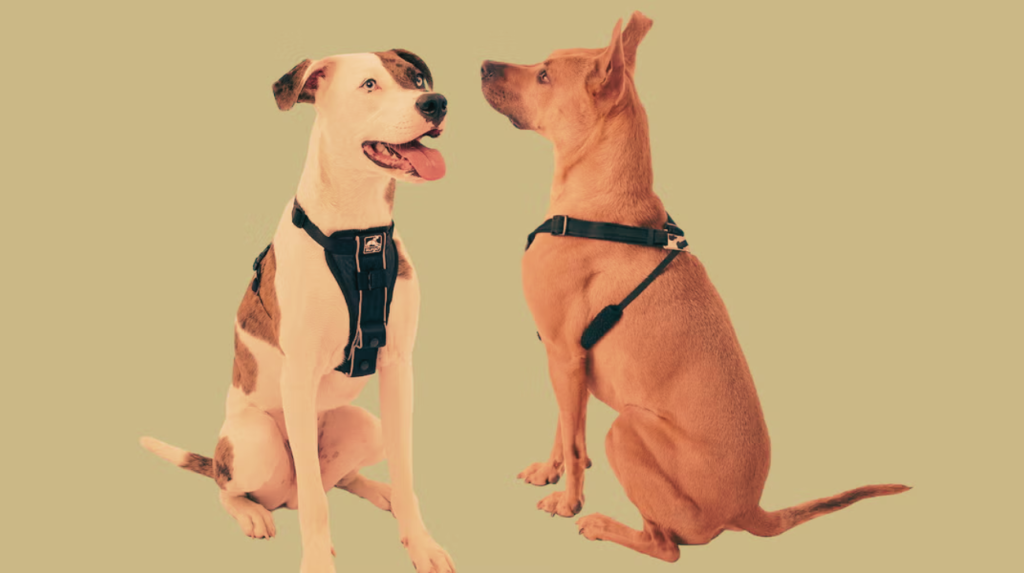
How to Use a Leash:
- Choose the Right Leash: Select a leash that is appropriate for your dog’s size and strength. For strong pullers, a sturdy leash with a secure clasp is essential.
- Proper Attachment: Ensure the leash is securely attached to a well-fitted collar or harness to prevent slipping or escaping.
- Training: Use the leash as a training tool to teach commands and reinforce good walking behavior. Avoid yanking or harsh pulling, which can cause injury or fear.
- Regular Inspection: Check the leash for signs of wear and tear, replacing it if necessary to maintain safety.
How to Use a Harness:
- Proper Fit: Measure your dog accurately and adjust the harness straps to ensure a snug but comfortable fit. Avoid straps that are too tight or too loose.
- Gradual Introduction: Allow your dog to get accustomed to wearing the harness by letting them wear it indoors for short periods before using it outdoors.
- Secure Attachment: Attach the leash to the appropriate point on the harness (front-clip for training, back-clip for casual walks) to maximize control and effectiveness.
- Monitor for Discomfort: Regularly check for signs of chafing, irritation, or discomfort, adjusting the harness as needed to ensure your dog’s comfort.
Safety Considerations:
- Supervision: Always supervise your dog when using a leash or harness to prevent accidents and ensure proper usage.
- Positive Reinforcement: Pair the use of these tools with positive reinforcement techniques to encourage good behavior and create a positive walking experience.
- Consult a Professional: If you’re unsure how to use a leash or harness effectively, seek advice from a professional trainer or veterinarian.
FAQs: Leash vs Harness for Dogs
1. What is the main difference between a leash and a harness?
A leash is a strap that attaches to a collar or harness to provide control during walks, while a harness is a device that fits around the dog’s chest and shoulders, distributing pressure more evenly. The harness serves as an alternative to collars, especially for dogs prone to neck strain or injury, making walks safer and more comfortable.
2. Which option is better for dogs that pull on walks?
Harnesses are typically better for dogs that pull because they distribute pressure across the chest and shoulders rather than concentrating it on the neck. Front-clip harnesses are particularly effective as they redirect the dog’s movement, making it harder for them to pull forward. This can help train dogs to walk calmly on a leash.
3. Are harnesses safer for small breeds compared to collars?
Yes, harnesses are safer for small breeds. Dogs with delicate necks, like toy breeds, are more vulnerable to tracheal damage from collars, especially if they pull or lunge during walks. A harness eliminates this risk by keeping the pressure away from the neck area.
4. Can a dog wear a harness all day?
It’s not recommended to leave a harness on your dog all day. While harnesses are safe for outdoor use during walks and activities, prolonged wear can cause discomfort, chafing, or skin irritation. It’s best to remove the harness when the dog is resting or at home to allow their skin to breathe.
5. Are certain breeds better suited to harnesses than collars?
Yes, certain breeds benefit more from harnesses. Brachycephalic breeds (such as pugs and bulldogs) with shorter snouts and respiratory issues should avoid collars, as pressure on the neck can exacerbate breathing problems. Similarly, large breeds or dogs with strong pulling tendencies are better managed with harnesses for better control and safety.
6. Is a leash attached to a collar sufficient for well-trained dogs?
For well-trained dogs that walk calmly without pulling, a leash attached to a collar can work well. However, a harness still offers added safety and control, particularly in environments with distractions or potential hazards. Even for calm dogs, a harness can reduce strain on the neck and provide a secure, comfortable fit.
Wrapping Up
Choosing between a leash vs harness for dogs depends on your dog’s specific needs, behavior, and your training goals. Leashes are essential for providing direct control and ensuring safety during walks, making them indispensable for all dog owners.
Harnesses, on the other hand, offer superior control for strong pullers, reduce strain on the neck, and provide added comfort and safety for dogs with health concerns. For insights on whether Pomeranians should wear a collar, including considerations for safety and alternatives, check out this informative article.
By considering your dog’s breed, temperament, and unique requirements, you can select the tool that best compliments your training and lifestyle. Remember, every dog is different, and finding the right fit may involve a bit of trial and error. But with patience and consistency, both leashes and harnesses can help you and your furry friend enjoy safe and happy walks.

